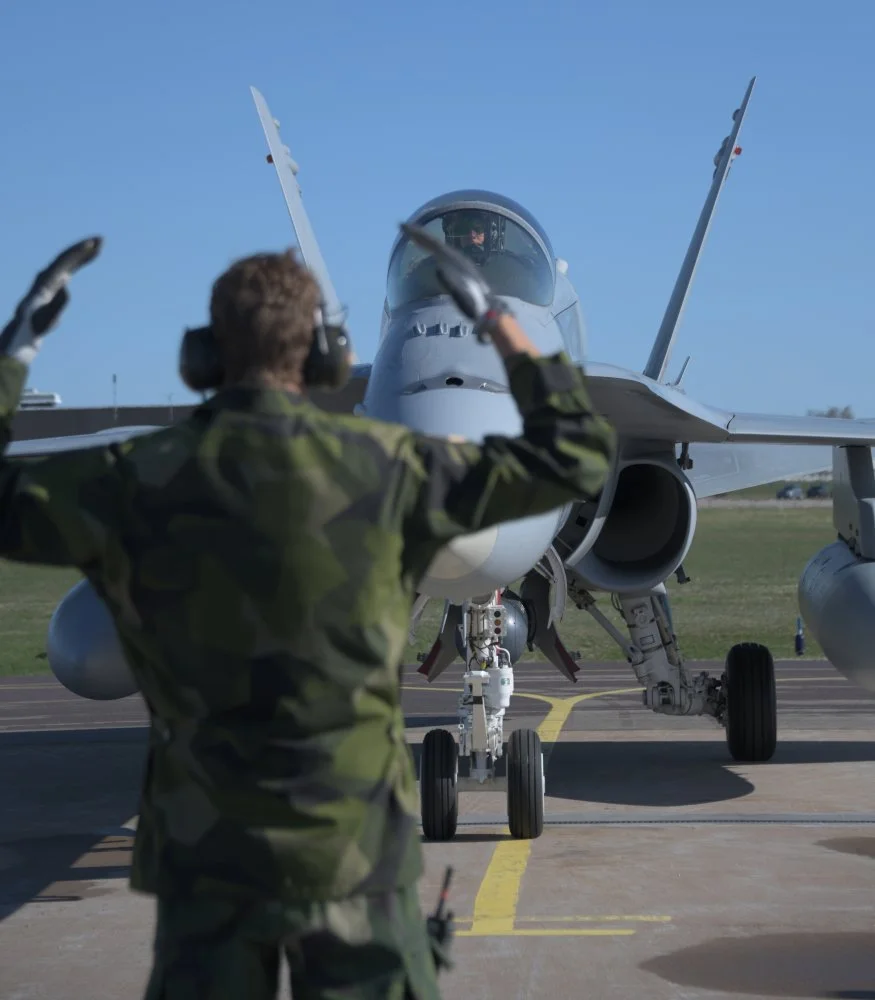Exploring The Potential Of A Joint Swedish-Finnish Military Force

Table of Contents
Strategic Advantages of a Unified Force
A Joint Swedish-Finnish Military Force offers several compelling strategic advantages, significantly bolstering the defense capabilities of both nations and enhancing regional security.
Enhanced Deterrence
A combined Swedish-Finnish force would act as a powerful deterrent against potential aggressors. The combined military strength would be far greater than the sum of its parts.
- Increased troop numbers and capabilities: Pooling military personnel would create a larger, more versatile fighting force.
- Shared resources and infrastructure: This would lead to significant cost-effectiveness, avoiding duplication of expensive equipment and training facilities.
- Stronger collective defense posture: A unified force presents a more formidable defense against any potential threats, significantly reducing vulnerabilities.
- Improved interoperability and coordination: Standardized training, equipment, and communication systems would ensure seamless cooperation during joint operations.
Optimized Resource Allocation
Merging the resources of the Swedish and Finnish militaries would lead to optimized resource allocation and greater efficiency.
- Consolidated procurement of equipment and supplies: Bulk purchasing would reduce costs and streamline logistics.
- Shared training facilities and infrastructure: Eliminating redundant facilities would save considerable resources.
- Reduced administrative overhead: Streamlining administrative processes would reduce bureaucracy and increase efficiency.
- Better allocation of personnel: Specialists could be deployed where most needed, optimizing expertise and capabilities.
Improved Regional Security Cooperation
A joint Swedish-Finnish military force would significantly enhance regional security cooperation within the Baltic Sea region and beyond.
- Enhanced interoperability with NATO allies: Closer integration with NATO would strengthen collective defense capabilities.
- Increased contribution to collective security operations: The unified force could offer a larger and more effective contribution to NATO missions.
- Strengthening of regional alliances: A stronger combined force would enhance alliances with neighboring countries.
- Promotion of stability in the Baltic region: A powerful, unified defense contributes to a more stable and secure Baltic Sea region.
Challenges and Obstacles to Implementation
While the potential benefits of a Joint Swedish-Finnish military force are substantial, several challenges and obstacles need to be addressed.
National Identity and Military Traditions
Balancing distinct national identities and military traditions within a unified structure presents a significant challenge.
- Differences in organizational structures and doctrines: Harmonizing different military structures and operational doctrines requires careful planning and compromise.
- Potential for friction in decision-making processes: Differences in national priorities and approaches could lead to friction within the joint command structure.
- Maintaining national pride and autonomy: A delicate balance must be struck between integration and maintaining individual national identities within the unified force.
- The need for careful integration of different cultural aspects: Cultural sensitivity and understanding are vital for successful integration.
Logistical and Administrative Hurdles
Merging two separate military systems is a complex logistical and administrative undertaking.
- Standardization of equipment and supplies: Adopting common standards for weapons, vehicles, and other equipment would be a significant undertaking.
- Harmonization of legal frameworks and regulations: Aligning legal frameworks and regulations across both nations requires careful legal coordination.
- Integration of different communication systems: Creating a unified and secure communication system is vital for effective joint operations.
- Restructuring of command and control structures: Reorganizing command structures to facilitate effective joint operations requires careful planning and coordination.
Political Considerations and Public Opinion
Securing political consensus and public support in both Sweden and Finland is crucial for the successful implementation of a joint force.
- Public opinion polls and acceptance: Gaining public support for such a significant change is essential.
- Parliamentary approval and governmental support: Strong political backing from both governments is absolutely necessary.
- Negotiation of treaties and agreements: Formal agreements and treaties are necessary to establish the legal framework for the joint force.
- Potential opposition from political factions: Navigating potential political opposition requires skillful diplomacy and compromise.
Conclusion
The creation of a Joint Swedish-Finnish Military Force presents both significant opportunities and substantial challenges. A unified force would offer undeniable strategic advantages in terms of enhanced deterrence, optimized resource allocation, and improved regional security cooperation. However, overcoming logistical, administrative, and political obstacles will be critical to its successful implementation. Careful consideration of national identities, military traditions, and public opinion is essential. Further research and debate on the various aspects of a Joint Swedish-Finnish Military Force are necessary to assess its feasibility and long-term impact on regional security. The potential benefits are substantial, but the challenges require careful and considered planning. Continued discussion and exploration of this topic are crucial for understanding the full potential of a joint Swedish-Finnish defense and its role in shaping the future of Northern European security. Let's continue the vital conversation about the future of a Joint Swedish-Finnish Military Force.

Featured Posts
-
 Hegseth Under Fire Pentagon Chaos Claims And Signal Chat Controversy
Apr 22, 2025
Hegseth Under Fire Pentagon Chaos Claims And Signal Chat Controversy
Apr 22, 2025 -
 Steeper Tariffs And Chinas Export Oriented Growth Strategy A Risky Proposition
Apr 22, 2025
Steeper Tariffs And Chinas Export Oriented Growth Strategy A Risky Proposition
Apr 22, 2025 -
 5 Crucial Steps Securing A Private Credit Position
Apr 22, 2025
5 Crucial Steps Securing A Private Credit Position
Apr 22, 2025 -
 Private Credit Hiring 5 Dos And Don Ts To Get Hired
Apr 22, 2025
Private Credit Hiring 5 Dos And Don Ts To Get Hired
Apr 22, 2025 -
 Hollywood Production Grinds To Halt As Actors Join Writers Strike
Apr 22, 2025
Hollywood Production Grinds To Halt As Actors Join Writers Strike
Apr 22, 2025
